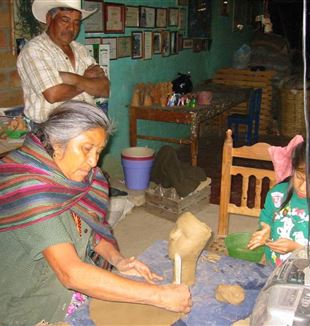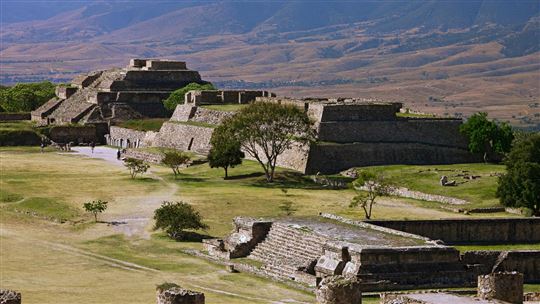
AMAZONIA /2: The potter and what Nietzsche could not have imagined
Guillermina lives in Ocotlán de Morelos, Mexico. She is a craftswoman with ten children. "Clay is earth, water, fire and air, but without me it's nothing. When I have a mass of clay, I pray and do not use moulds.” This is what her work teaches her.Nietzsche, very sick and nearly at the end of his life, dreamt of going to live in Oaxaca to recover his health, because he had been shown photos of this region of Mexico and was enchanted.
One day of tropical rain, a group of women, in multi-coloured clothes, walked down the street without sheltering themselves from the rain, because, as Guillermina said, "we must let things touch us: tread the ground, suffer hunger, soak in the rain, cry in pain, talk to friends ...". And then: "My mother taught me not to dry the water from my hands.”
I heard these words for the first time from the mouth of Guillermina, a Zapotec potter, who lives in Ocotlán de Morelos in the state of Oaxaca, Mexico; she is the mother of ten children who, like her, work in the fields and mix clay.
For this woman, reality is almost naturally sacred. And when she speaks about anything, she does so with authority and wisdom, without having had a university education. Her conscience is defined by a religious relationship with everything.
Watching her work, in her simple artisan oven, makes you want to ask her about her job. One day, over a cup of coffee, I asked her what clay was. She did not hesitate even for a moment and replied: "Clay is earth, water, fire and air, but without me it is nothing. When I have the mass of clay, I pray and do not use moulds. Each figure is always new."
It’s not common for a woman to raise ten children and to work with joy and creativity but, for her, it’s not a problem to work and also be a mother, and she usually says: "I carried my children on my shoulders until they were five years old, whilst I was kneading the clay or working the earth. Even though its hard to take care of your own children.” Despite what many of her people think, she is convinced that "work is energy for life and it is also a blessing for the person".
The intense blue sky of Oaxaca, without a doubt, stimulates its artists and craftsmen to create works of great beauty, but there’s more than this: behind people like Guillermina, is the story of religious people who educate in responsibility from childhood. All this is far from the image of indolence that we have of certain indigenous ethnic groups.
Guillermina says that, at the age of ten, she learnt what responsibility was, “when my mother would send me to take coffee to my father, who worked in the fields from 5 in the morning to support us.”
What Nietzsche could not have imagined was that, in this beautiful land, he could find wise interlocutors like Guillermina, from whom he could learn a lot.
(to be continued)#SynodAmazon #LatinAmerica